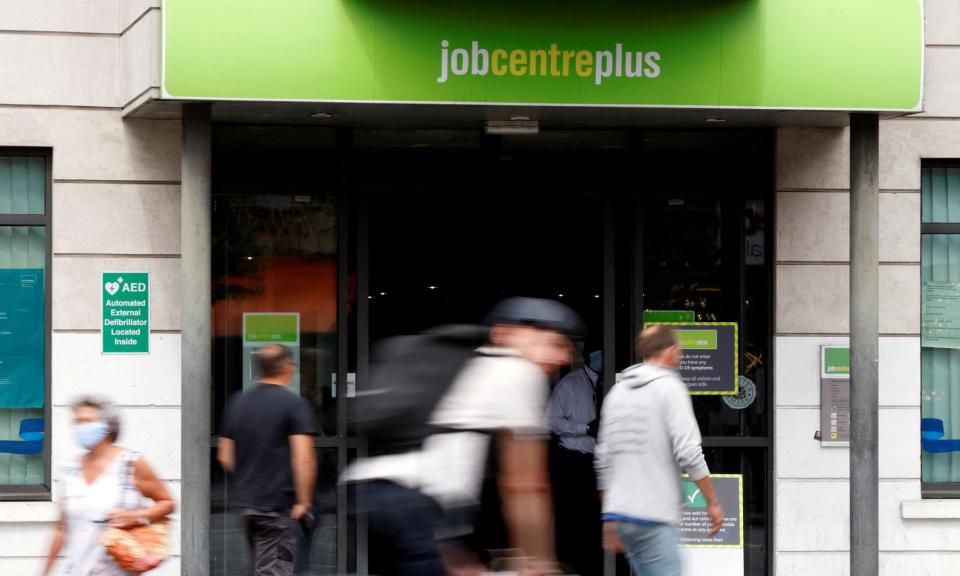Strong wage growth will further delay cut in UK interest rates, City believes

Persistently strong wage pressure is set to delay a cut in interest rates until well after the election despite mounting evidence that the UK jobs market is cooling, the City believes.
Financial markets indicate that traders expect the Bank of England will hold off reducing the cost of borrowing from 5.25% until it is convinced earnings growth has decisively fallen from levels seen as incompatible with hitting the government’s 2% inflation target.
Earlier this year, markets were pencilling in four quarter-point rate cuts but now expect two at the most, with the first not until the late summer or early autumn.
Annual pay was 5.9% higher in the three months to April than a year earlier, unchanged on the March figure, but for the private sector the rate of growth eased from 6.1% to 5.8%.
The earnings data was in contrast with the rest of the Office for National Statistics report, which showed unemployment up by 138,000 in the three months to April and the unemployment rate at 4.4% – its highest in more than two and a half years.
In the last set of labour market figures before the general election, job vacancies also continued to fall – dropping by 12,000 to 904,000 in the three months to May.
Meanwhile, the number of people not working because of long-term ill health was up by 55,000 to a record 2.83 million.
Despite the near 10% increase in the national minimum wage, which affected more than 3 million workers, there was tentative evidence that pay growth may have peaked.
In April alone, earnings overall were 5.5% up on the same month in 2023, compared with 6.4% in the year to March. In the private sector, the annual increase was 5% in April, down from 6.8% in the year to March.
Pay in real terms is rising because wages are increasing faster than the annual inflation rate, which was 2.3% in April.
Yael Selfin, the chief economist at KPMG UK, said: “The unemployment rate ticked up to 4.4%. The recent weakening in demand for staff has been attributed to a lack of roles and firms delaying hiring decisions. This is consistent with a broader trend of retaining existing labour, and could signal that firms expect a pickup in activity so that they could utilise their existing staff more.”
Using data provided by HMRC, the ONS said its early estimate for May showed the number of employees falling by 3,000, although the total was 167,000 up on a year earlier.
Stephen Evans, the chief executive at the Learning and Work Institute, said: “The last labour market stats before the election show a further drop in employment and rise in economic inactivity.
“Some 3.2 million people are out of work but want a job: the next government needs to widen employment support to all who want to work, given today only one in 10 out-of-work disabled people get help to find work each year.
“Average earnings are rising in real terms as inflation falls but are a staggering £12,000 a year below what they’d be on pre-financial crisis trends. This shows the scale of catch-up needed in the years ahead.”
Liz Kendall, the shadow work and pensions secretary, said: “Today’s figures confirm that the Tories have no hiding place after 14 years of abject failure. Labour’s plan will get Britain working by cutting NHS waiting lists, introducing a new national jobs and careers service, making work pay and supporting people into good jobs across every part of the country.”
Nye Cominetti, the principal economist at the Resolution Foundation thinktank, said it was worrying that employment was closer to its mid-pandemic lows, than its pre-pandemic highs.
“Turning around this poor performance, and kickstarting the kind of jobs growth Britain experienced in the 2010s will be a key task for the next government,” he said.
“But while the jobs market weakens, pay packets remain resilient. This recent spurt of real wage growth, the strongest in an almost a decade, will be a relief to workers and a worry for the Bank of England. But it can’t be sustained unless productivity picks up.”

 Yahoo Finance
Yahoo Finance 